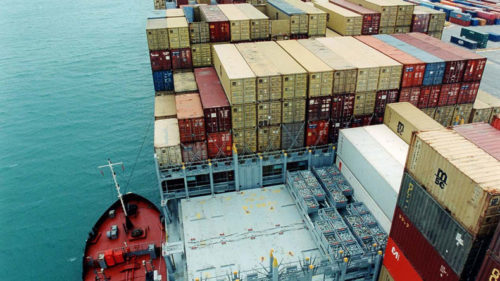
Over the last decade, overall containership fleet growth has been driven by demand for larger ships – a trend that is not expected to be reversed soon, according to Alphaliner.
Since 2010, the global containership fleet’s growth has come entirely from vessels of over 5,100 TEU, while the number of ships of below this mark reduced notably.
The contrast is even more apparent when comparing growth in the size range of over 10,000 TEU, where 505 ships have been added, against the decline in the smaller size ships of below 3,000 TEU, where numbers have dwindled by 211 units.
“The current container ship orderbook shows a continuation of this trend, driven by a sustained growth in the ‘very large’ and ’ultra-large’ vessel segments. A total of 121 ships of over 10,000 teu are currently on order and scrapping in this size range is not expected to occur in the next five years,” Alphaliner said.
While the fleet segment of below 3,000 TEU also has 290 ships on order, almost 700 vessels from this sector are at least 20 years old and many are expected to be scrapped in the coming years.
Alphaliner data shows that the mid-sized sector is practically empty with only twelve units of 3,000-3,500 TEU on order, while there have been no ships of between 4,000-10,000 TEU ordered since 2015. Shipowners seem to be interested in the large (>10,000 TEU) and small (<3,000 TEU) market segments.
Improved port infrastructures in the emerging markets in Africa, Latin America and the Indian subcontinent/Middle East and Increased shipping volumes on the routes serving them have led to the replacement of 1,000 – 3,000 TEU ships by larger units.
“The overhang of cheap classic Panamax ships of 4,000-5,100 TEU has also hastened the shift, while the oncoming IMO 2020 sulphur cap rule will favour larger ships to mitigate the increase in fuel prices,” Alphaliner explained.
Copyright Ships & Ports Ltd. Permission to use quotations from this article is granted subject to appropriate credit given to www.shipsandports.com.ng as the source.
